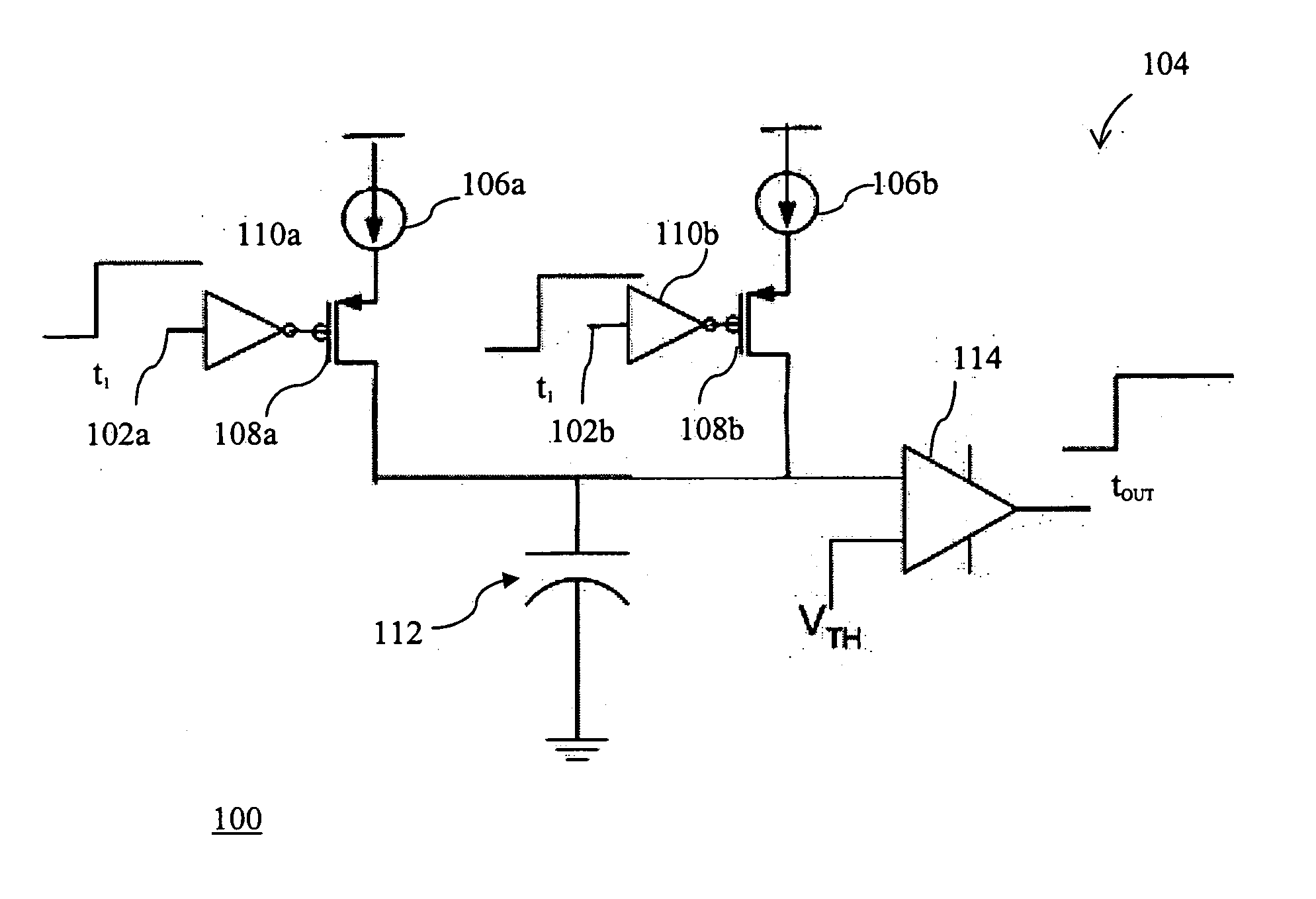Time-mode analog computation circuits and methods
a computation circuit and time-mode technology, applied in the field of analog computational circuits, can solve the problems of limited dynamic range (dr), computational circuits that exhibit poor signal-to-noise ratio (snr), and/or high power consumption, and achieve the effect of overcompensating the limitations of voltage-based scaling
- Summary
- Abstract
- Description
- Claims
- Application Information
AI Technical Summary
Benefits of technology
Problems solved by technology
Method used
Image
Examples
examples
[0080] The present invention is further illustrated by the following specific examples, which should not be construed as limiting the scope or content of the invention in any way.
[0081] Circuit 100 shown in FIG. 1 was simulated and prototype time-mode circuits according to the invention measured under a variety of conditions. FIG. 8 shows Cadence-Spectre simulation results where circuit 100 was used to compute the arithmetic mean of two input steps, t1, and t2. The values of t1, t2, C, VTH and I(I1=I2) used in the simulation were 200 μs, 400 μs, 20 pF, 2.5V and 50 nA, respectively. The output expected from circuit 100 from equation (1) above is 800 μs which includes a 500 μs offset term (CVTH / I) thus computing the actual mean of t1 and t2 of 300 μs. The output obtained from simulations performed was 801 μs. It is noted that random variations in this delay and in the current sources can lead to inaccuracies in the calculations generated.
[0082]FIG. 9 shows measured data from a fabri...
PUM
 Login to View More
Login to View More Abstract
Description
Claims
Application Information
 Login to View More
Login to View More - R&D
- Intellectual Property
- Life Sciences
- Materials
- Tech Scout
- Unparalleled Data Quality
- Higher Quality Content
- 60% Fewer Hallucinations
Browse by: Latest US Patents, China's latest patents, Technical Efficacy Thesaurus, Application Domain, Technology Topic, Popular Technical Reports.
© 2025 PatSnap. All rights reserved.Legal|Privacy policy|Modern Slavery Act Transparency Statement|Sitemap|About US| Contact US: help@patsnap.com



